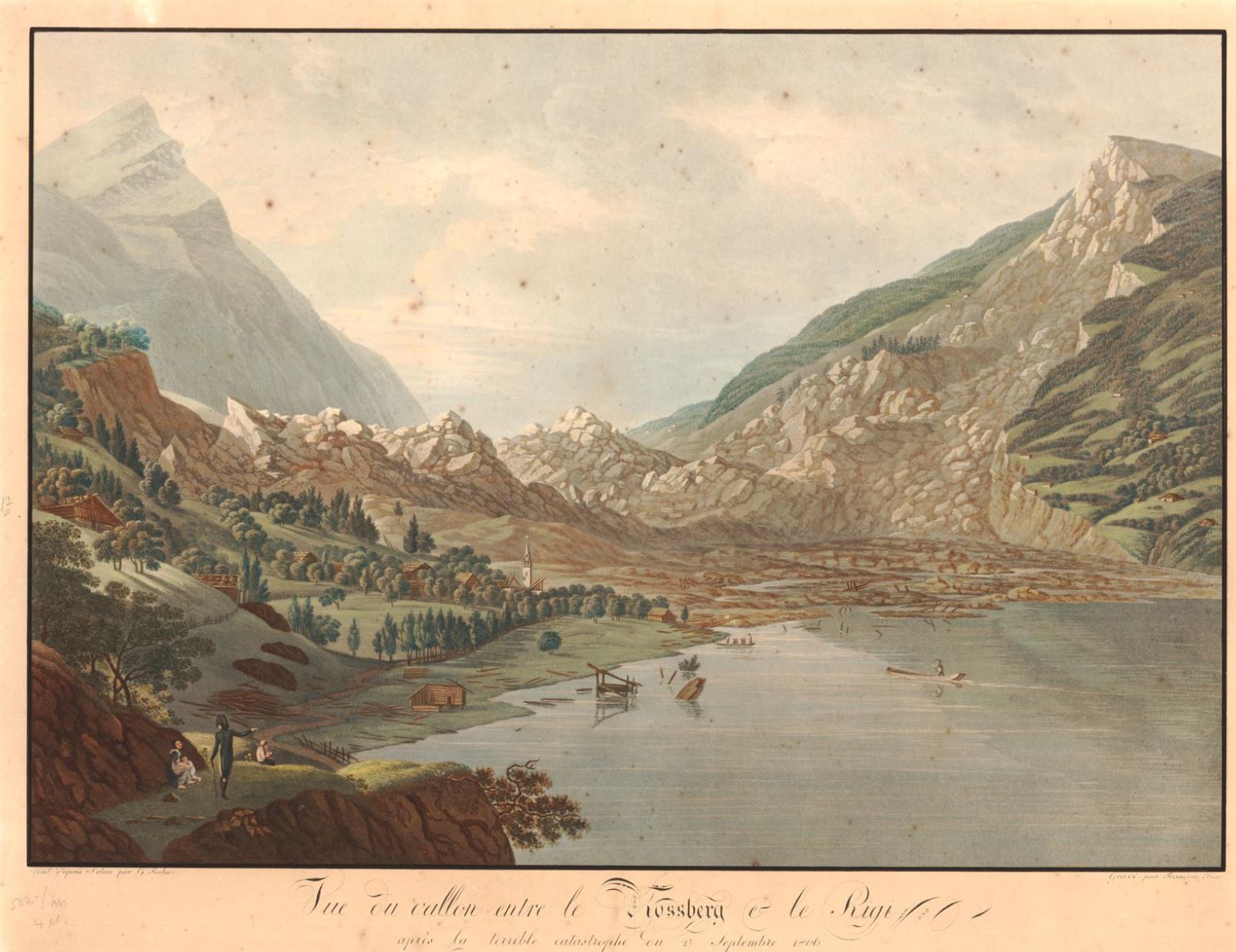11 June 2020
Landslides in Art Part 33: Vue du vallon entre le Rossberg e le Rigi apres la terrible catastrophe du 2e Septembre 1806
Posted by Dave Petley
Landslides in Art Part 33: Vue du vallon entre le Rossberg e le Rigi apres la terrible catastrophe du 2e Septembre 1806
The British Museum collection includes a print of a painting by Gaspar Rahn entitled Vue du vallon entre le Rossberg e le Rigi apres la terrible catastrophe du 2e Septembre 1806. This translates as View of the valley between Rossberg and Rigi after the terrible disaster of 2nd September 1806.
This is the print:-

Vue du vallon entre le Rossberg e le Rigi apres la terrible catastrophe du 2e Septembre 1806.
.
This painting clearly shows a very large landslide with a long runout. The material involved in the failure is clearly mostly large rock blocks. Note in the foreground clear damage to buildings, and considerable strewn debris, suggesting that the landslide generated a displacement wave in Lake Lauerz.
This painting depicts of the aftermath of the so-called Goldau Landslide in Switzerland, which has featured in this series previously thanks to a painting by Joseph Mallord William (JMW) Turner. As I noted then, the Goldau landslide was triggered by heavy rain, with an estimated volume of 120 million cubic metres, covering an area of about 20 square kilometres. The landslide, and the tsunami it created on Lake Lauerz, destroyed 111 houses, 220 farm buildings and two churches, resulting in the deaths of 457 people. There is a brief write up of the Goldau landslide on the Scientific American blog, whilst another article on the same site notes that this was the first landslide to be investigated in depth by geologists.
.
On reflection 1: Landslides at the start of the rainy season in China
Xinhua is reporting multiple landslide fatalities triggered by heavy rainfall in China. For example, in Baojing County in Hunan Province, heavy rainfall has triggered landslides and floods that have destroyed several village houses, killing six people, with a further person missing and three others injured.
.
On reflection 2: How medieval Europe recovered from earthquakes
The Conversaton has a very nice article on the ways in which societies in medieval Europe recovered from destruction earthquakes. The impact of coseismic landslides and rockfalls features heavily.


 Dave Petley is the Vice-Chancellor of the University of Hull in the United Kingdom. His blog provides commentary and analysis of landslide events occurring worldwide, including the landslides themselves, latest research, and conferences and meetings.
Dave Petley is the Vice-Chancellor of the University of Hull in the United Kingdom. His blog provides commentary and analysis of landslide events occurring worldwide, including the landslides themselves, latest research, and conferences and meetings.